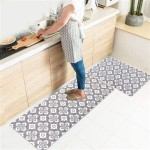Replacement Soap Pump for Kitchen Sink
The kitchen sink soap pump is a seemingly small but crucial element of a functional and hygienic kitchen. Its purpose is to dispense soap or lotion efficiently, minimizing mess and promoting cleanliness during food preparation and dishwashing. Over time, however, these pumps can fail due to wear and tear, clogging, or material degradation. Replacing a faulty soap pump is often a more cost-effective and environmentally conscious option than replacing the entire sink unit. This article provides a comprehensive overview of replacement soap pumps for kitchen sinks, covering their types, selection criteria, installation process, maintenance tips, and common troubleshooting solutions.
Types of Kitchen Sink Soap Pumps
Replacement soap pumps for kitchen sinks are available in a variety of types, each with its own features, advantages, and disadvantages. Understanding these different types is essential for selecting the most suitable option for a specific kitchen sink and usage needs.
Built-in Soap Dispensers: These pumps are designed to be integrated directly into the kitchen sink or countertop. They typically feature a nozzle that extends over the sink and a refillable bottle located beneath the surface. Built-in dispensers offer a clean and streamlined look, minimizing clutter on the countertop. They often require a pre-drilled hole in the sink or countertop for installation.
Countertop Soap Dispensers: As the name suggests, these dispensers sit directly on the countertop next to the sink. They are available in a wide range of styles, materials, and finishes. Countertop dispensers are generally easier to install than built-in models, as they do not require any modifications to the sink or countertop. However, they can take up valuable counter space.
Wall-Mounted Soap Dispensers: Wall-mounted dispensers are attached to the wall above the sink, freeing up countertop space. They are often used in commercial kitchens or bathrooms, but can also be a practical option for residential kitchens with limited counter space. Installation typically involves drilling holes in the wall and mounting the dispenser with screws.
Touchless Soap Dispensers: These dispensers use infrared sensors to detect the presence of hands and automatically dispense soap or lotion. Touchless dispensers are considered more hygienic than traditional pumps, as they eliminate the need to physically touch the dispenser. They are typically battery-operated or plug-in powered.
Material Considerations: The materials used in the construction of a soap pump significantly impact its durability and aesthetic appeal. Common materials include stainless steel, chrome, brass, plastic, and ceramic. Stainless steel and chrome are popular choices due to their resistance to corrosion and their sleek appearance. Brass offers a more traditional look, while plastic is a cost-effective option. Ceramic dispensers are often chosen for their decorative qualities.
Selecting the Right Replacement Soap Pump
Choosing the correct replacement soap pump involves considering several factors to ensure compatibility, functionality, and aesthetic harmony with the existing kitchen setup. Ignoring these factors can result in a mismatched look or a non-functional pump.
Compatibility: The first and most important consideration is compatibility with the existing sink configuration. For built-in dispensers, ensure that the replacement pump has the same nozzle size and thread diameter as the original. For countertop or wall-mounted dispensers, ensure that the base or mounting bracket is compatible with the available space.
Capacity: The capacity of the soap reservoir is another important factor to consider. A larger reservoir will require less frequent refilling, but it may also take up more space. Consider the frequency with which the soap pump is used and choose a reservoir size that meets the demand without being excessively large.
Ease of Refilling: Refilling the soap reservoir should be a simple and convenient process. Some dispensers have removable bottles that can be easily filled, while others require pouring soap directly into the dispenser from the top. Consider the ease of refilling when selecting a replacement pump.
Durability: Choose a replacement pump made from durable materials that can withstand daily use. Stainless steel and high-quality plastics are generally good choices. Check reviews and ratings to get an idea of the pump's reliability and longevity.
Aesthetics: The replacement pump should complement the overall style of the kitchen. Consider the finish of the sink, faucet, and other fixtures when choosing a pump. Stainless steel and chrome are versatile options that can coordinate with a wide range of kitchen styles.
Price: Replacement soap pumps are available at a wide range of price points. Set a budget before shopping and compare prices from different retailers. Keep in mind that a higher price does not always guarantee better quality, but it is often worth investing in a pump that is made from durable materials and has a good reputation.
Installation and Maintenance
Installing a replacement soap pump is typically a straightforward process that can be completed with basic tools. Regular maintenance is essential to keep the pump functioning properly and extend its lifespan.
Installation Process:
Removing the Old Pump: For built-in dispensers, start by disconnecting the soap reservoir from the pump. Use a wrench or pliers to loosen the nut that secures the pump to the sink or countertop. Carefully remove the old pump from the hole.
Preparing the Installation Area: Clean the area around the hole to remove any debris or soap residue. If necessary, apply a bead of sealant around the hole to prevent water from leaking.
Installing the New Pump: Insert the new pump into the hole and secure it with the nut. Tighten the nut until the pump is snug, but do not overtighten, as this could damage the pump or the sink.
Connecting the Soap Reservoir: Attach the soap reservoir to the pump. Make sure the connection is secure to prevent leaks.
Testing the Pump: Fill the reservoir with soap and test the pump to ensure that it is dispensing soap properly.
Maintenance Tips:
Regular Cleaning: Clean the soap pump regularly to prevent soap buildup and clogging. Use a damp cloth to wipe down the exterior of the pump. For built-in dispensers, periodically remove the soap reservoir and clean it with warm soapy water.
Flushing the Pump: If the pump becomes clogged, try flushing it with warm water. Remove the soap reservoir and fill it with warm water. Pump the water through the dispenser several times to dislodge any clogs.
Using the Right Soap: Use soap that is specifically designed for use in soap dispensers. Avoid using soaps that are too thick or that contain abrasive particles, as these can clog the pump.
Checking for Leaks: Regularly check the pump for leaks. If you notice any leaks, tighten the connections or replace any damaged parts.
Descaling: Mineral buildup can occur in the pump over time, especially in areas with hard water. Periodically descale the pump by soaking it in a solution of vinegar and water. This will help to remove mineral deposits and keep the pump functioning properly.
Troubleshooting Common Problems
Even with proper maintenance, soap pumps can sometimes experience problems. Here are some common issues and their solutions:
Pump Not Dispensing Soap:
Clogged Nozzle: The most common cause of this problem is a clogged nozzle. Try cleaning the nozzle with a pin or a small brush.
Air Lock: An air lock can prevent the pump from dispensing soap. Try priming the pump by repeatedly pumping it until soap starts to flow.
Empty Reservoir: Make sure that the soap reservoir is not empty. Refill the reservoir with soap.
Thick Soap: Soap that is too thick can clog the pump. Try diluting the soap with water.
Pump Leaking:
Loose Connections: Check all connections to make sure they are tight. Tighten any loose connections.
Damaged Seals: Damaged seals can cause leaks. Replace any damaged seals.
Cracked Reservoir: A cracked reservoir can leak. Replace the reservoir.
Pump Dispensing Soap Slowly:
Clogged Pump: A clogged pump can cause soap to dispense slowly. Try flushing the pump with warm water.
Thick Soap: Soap that is too thick can cause soap to dispense slowly. Try diluting the soap with water.
Weak Spring: A weak spring in the pump mechanism can cause soap to dispense slowly. Replace the spring.
By understanding the different types of replacement soap pumps, selecting the right one for a specific kitchen, following proper installation and maintenance procedures, and knowing how to troubleshoot common problems, homeowners can ensure that their kitchen sink soap pump remains a functional and hygienic element of their kitchen for years to come. Investing in a high-quality replacement and maintaining it proactively will save time, money, and frustration in the long run.

Plumbflex Kitchen Sink Stainless Steel Soap Dispenser Built In Design For Counter Top With Large Liquid Bottle Brushed Nickel 1000e

Plumbflex Kitchen Sink Stainless Steel Soap Dispenser Built In Design For Counter Top With Large Liquid Bottle Brushed Nickel 1000e

Glacier Bay Soap Lotion Dispenser Pump Assembly Rp90156

Plumbflex Kitchen Sink Stainless Steel Soap Dispenser Built In Design For Counter Top With Large Liquid Bottle Brushed Nickel 1000e

Plumbflex Kitchen Sink Stainless Steel Soap Dispenser Built In Design For Counter Top With Large Liquid Bottle Brushed Nickel 1000e

2pcs Kitchen Sink Soap Dispenser Brushed Nickel Stainless Steel 350ml Walmart Business Supplies

Kitchen Soap Dispenser Extension Tube Kit Metal Under Deck Counter Mounted Replacement For Easy Refills

Proox Built In Sink Soap Dispenser Or Lotion For Kitchen Matte Black Abs Pump Head

Built In Sink Soap Dispenser Or Lotion For Kitchen

Proox Built In Sink Soap Dispenser Or Lotion For Kitchen Matte Black Abs Pump Head Pr I803 Mb








